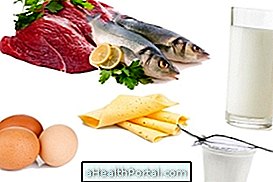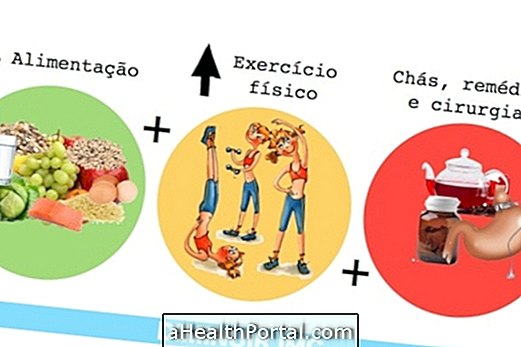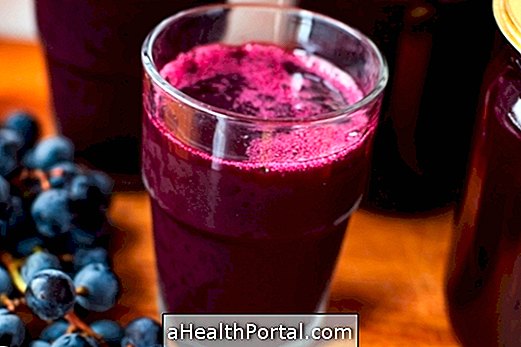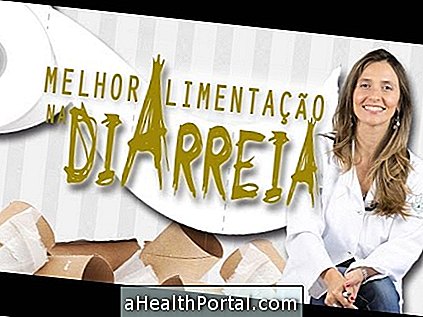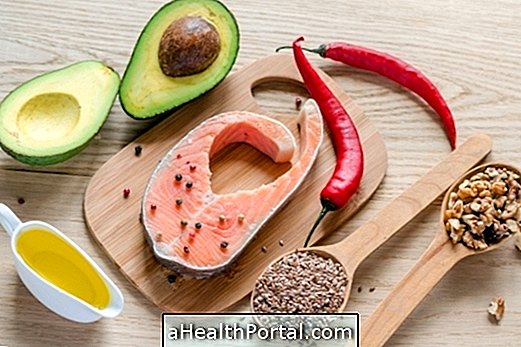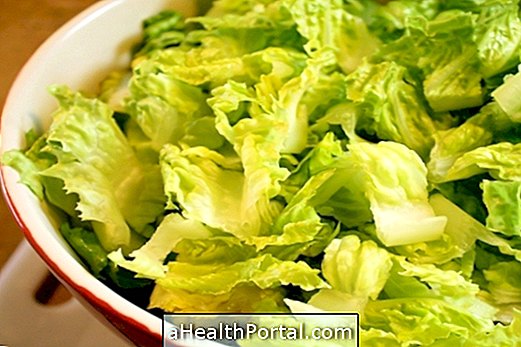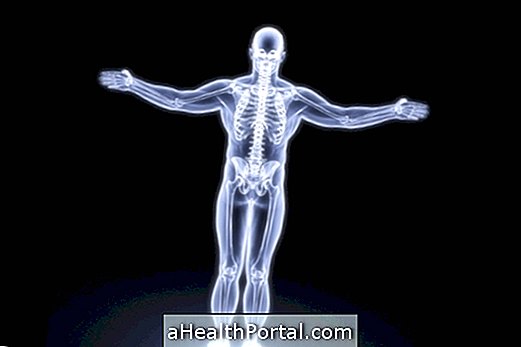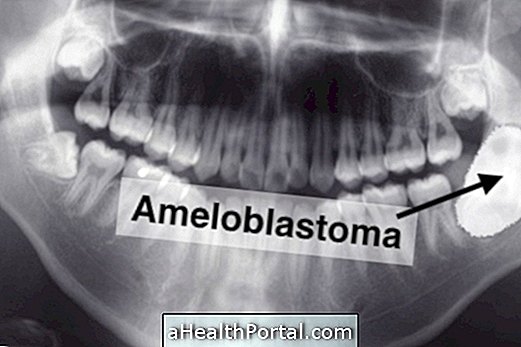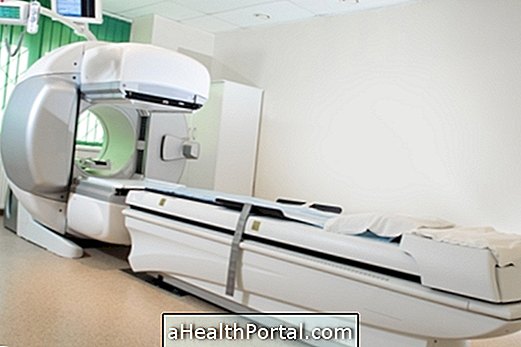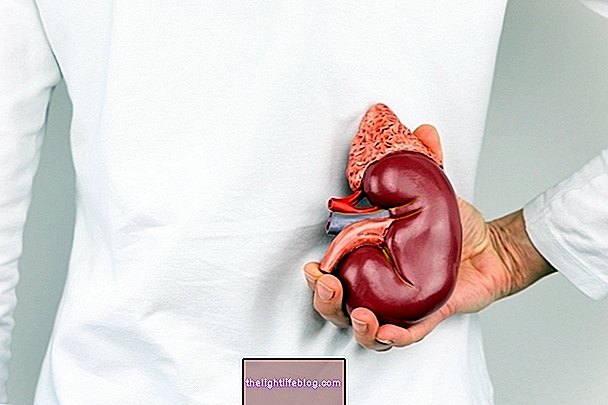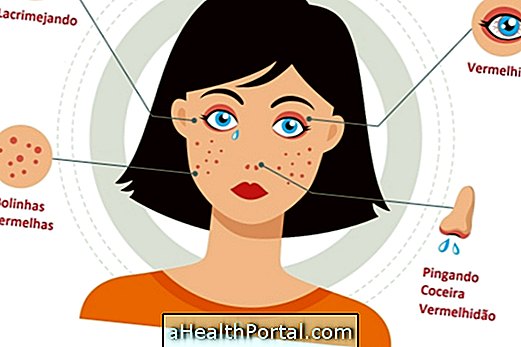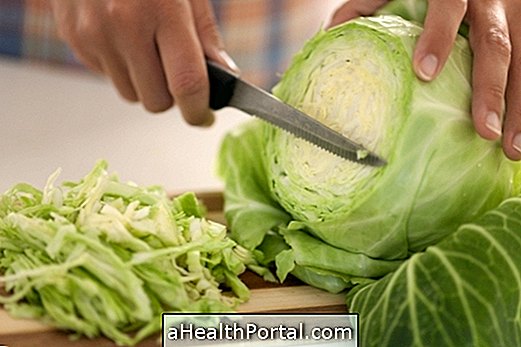To make the ketogenic diet, one should eliminate all carbohydrate-rich foods like bread and rice, and increase mainly the consumption of foods rich in fats, while also keeping a good amount of protein in the diet. This diet works to lose weight because, in this way, the body starts to use the fat itself as a source of energy instead of the carbohydrate that comes from the diet.
This type of feeding is indicated mainly to control and prevent seizures and seizures of epilepsy, however, it has also been used to accelerate weight loss and, in some cases, for the treatment of cancer, since the cancerous cells feed mainly of carbohydrate, which is the nutrient withdrawn from the ketogenic diet.
Here's how to make the ketogenic diet to treat epilepsy or during cancer treatment.
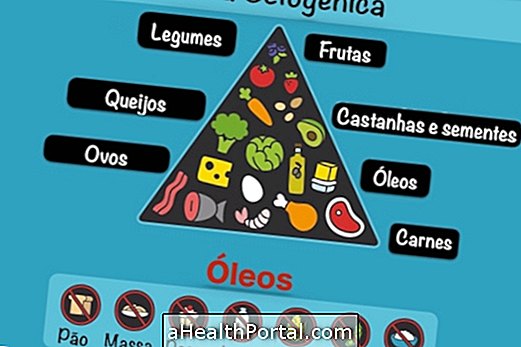
How it works
The ketogenic diet consists of a drastic reduction of carbohydrates in the diet, which will only participate in 10 to 15% of the daily calories. To compensate for this reduction, one must have a large increase in fat consumption, represented by foods like avocado, coconut, seeds, sour cream, olive oil, peanuts, nuts, nuts and almonds.
In addition, the amount of protein should also increase until it is about 30% of the food, and it is necessary to eat meat, chicken or fish at lunch and dinner, and include eggs and cheeses in snacks.
Another diet very similar to ketogenic is the low carb diet, and the main difference is that the ketogenic diet makes a much greater use of fats to compensate for the lack of carbohydrates.
Foods Allowed and Forbidden
The following table lists the foods that can and can not be eaten in the ketogenic diet.
| Allowed | Forbidden |
| Meat, fish and eggs | Rice noodles corn |
| Sausages such as ham, sausage and bacon | Beans, soybeans, peas, chickpeas |
| Olive Oil, Oils, Butter, Margarine | Wheat flour, oats |
| Cheese, sour cream and yogurts without sugar | Bread, toast |
| Peanut, walnut, hazelnut, chestnut | Potato |
| Fruits | Cakes, sweets, biscuits, chocolate |
| Vegetables and greens | Sugar and sweeteners |
| Seeds like flaxseed, chia, sunflower | Powdered milk powder |
| Sauces like mayonnaise and mustard | Pizza, lasagne, yogurt with added sugar |
It is important to remember that in this diet one should consume fruits and vegetables in the same way as in a normal diet without increasing the amount. Thus, 3 to 4 units of fruit per day and vegetables should be eaten at lunch and dinner times.
Ketogenic diet menu
The following table provides an example of a complete 3-day menu of the ketogenic diet:
| Meal | Day 1 | Day 2 | Day 3 |
| Breakfast | 1 glass of green tea + 2 fried eggs in butter + 1 slice of cheese curd or mines | omelet made with 2 eggs and stuffing of vegetables + 1 glass of green juice | 1 glass of avocado whipped with yogurt and chia |
| Morning snack | 10 cashew nuts | 10 strawberries + 2 tablespoons sour cream | 2 slices of papaya + 1 cabbage of peanut butter |
|
Lunch/ Dinner | 200g of meat + green salad + 3 tablespoons of avocado + olive oil | 200 g chicken with skin + 20 cashew nuts + vegetable salad with olive oil and sesame | 2 roasted fish with vegetables and olive oil + 4 cheese |
| Afternoon snack | 1 glass of avocado beaten coconut milk or almonds + 1 col de flax flour | 2 fried eggs in butter + 1 slice of cheese curd or mines | 2 scrambled eggs with mushrooms and chia + 1 cup of green tea |
It is important to remember that the ketogenic diet must be prescribed by a professional nutritionist, and follow-up is necessary to prevent problems such as lowering blood glucose and increasing cholesterol.
Cyclic ketogenic diet
The cyclic ketogenic diet helps maintain good diet and good weight loss, helping to provide energy for physical exercise.
In this type, one must follow the menu of the ketogenic diet for 5 consecutive days, which are followed by 2 days in which it is allowed to consume foods with carbohydrates, such as bread, rice and pasta. However, foods like sweets, ice creams, cakes and other sugar-rich products should continue off the menu.
Contraindications
The ketogenic diet is contraindicated for people over 65 years of age or with a history of problems such as liver or kidney failure, cardiovascular disease, stroke, and patients on cortisone-based medications.
In these cases, the ketogenic diet must be authorized by the physician and followed by a nutritionist.
See an example of a 3-day menu on Weight Loss with ketogenic diet.
